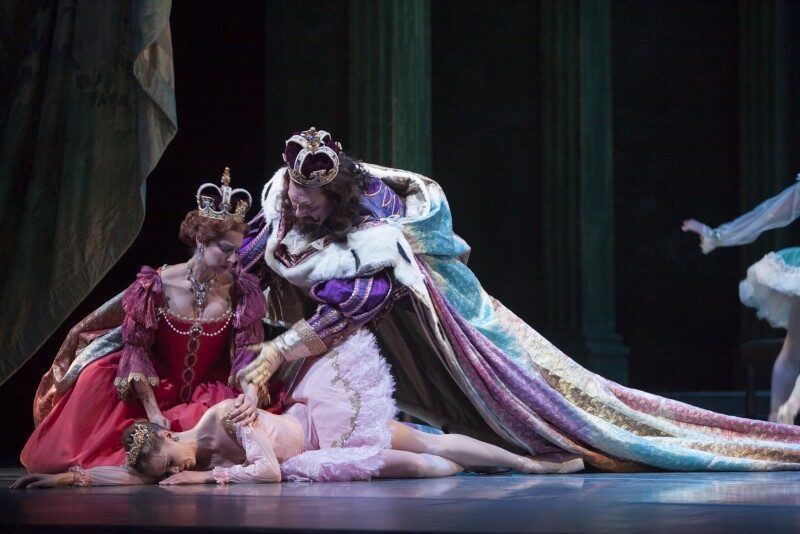A Paragon of Ballet
Review of The Sleeping Beauty at Pacific Northwest Ballet by Leon J.

Picture a stage. Picture a baroque-inspired set with tall pillars and marble sets. Purple, blue, and green lighting illuminates purple, blue, and green-dressed dancers as the curtain rises, giving everything a slightly ethereal look. The music swells. The dance begins.
So starts Pacific Northwest Ballet's production of Tchaikovsky's iconic The Sleeping Beauty. A three-act ballet (with an additional prologue) based on the famous fairy tale, The Sleeping Beauty is a paragon of ballet.
The story starts with the birth celebration of the newborn princess Aurora in the court of King Florestan XIV. The celebration soon come to a halt, however, when it is discovered that the bumbling Master of Ceremonies forgot to invite the fairy Carabosse. She arrives and flies into a rage, cursing Aurora to prick her finger on a spindle and die on her 16th birthday. But the Lilac Fairy, who had not yet given Aurora a gift as all the other fairies had, uses her magic to bend the curse: Aurora will instead prick her finger and fall into a deep sleep that only a kiss can break.
The visually stunning ballet then charts over the next three acts: Aurora falling into a magical sleep, the good Prince awakening her 100 years later, and a magical royal wedding.
The costumes of the first two acts call upon an out-of-time mix of baroque and Regency-era inspired costumes — think empire waistlines, pointed waistlines, large necklines for women, and closed necklines for men. In the third act, taking place 100 years later, the style is firmly baroque — pointed waistlines, powdered wigs, tight waists, and large hips — which, in addition to being a gorgeous aesthetic, is a wonderful testament to the ability of the dancers; just imagine a group of women dressed like Marie Antoinette festively dancing to Tchaikovsky's music.
The music itself is very baroque-inspired, drawing upon elements of rococo dances, and the orchestra performs it precisely. Every note is hit exactly, not a second out of place and not a beat behind.
And the dancers, including Kaori Nakamura (Aurora) and Laura Tisserand (Lilac Fairy), hit every step perfectly and seem to spend more time above the stage than on it. Special notice goes to Nakamura and Tisserand for dancing so well and doing it through the majority of the three-hour performance, as well as to Seth Orza (Prince) and Jonathan Porretta (Carabosse ) — the latter especially notable for, at several points, flying on and off the stage on a wire.
The set, costumes, music, and dancers wow. These qualities and more — such as children who dance like professionals, beautiful makeup work, and a friendly and personable staff, to name a few — make for a mostly thrilling production. The only complaint: The third drags at points, as the ballet dancers at Aurora's wedding come out for several dances apiece. Especially to the more casual viewer of ballet, it can come across as a bit much. Still, overall, The Sleeping Beauty is a ballet you don't want to miss.
So dress your finest, grab a friend, and head down to McCaw Hall. Let your worries go and let the dancers put you under their spell. The experience is such a thrill, you might leave feeling as if you've been away from the world you know for 100 years.
The Sleeping Beauty
Pacific Northwest Ballet
January 31 - February 9


